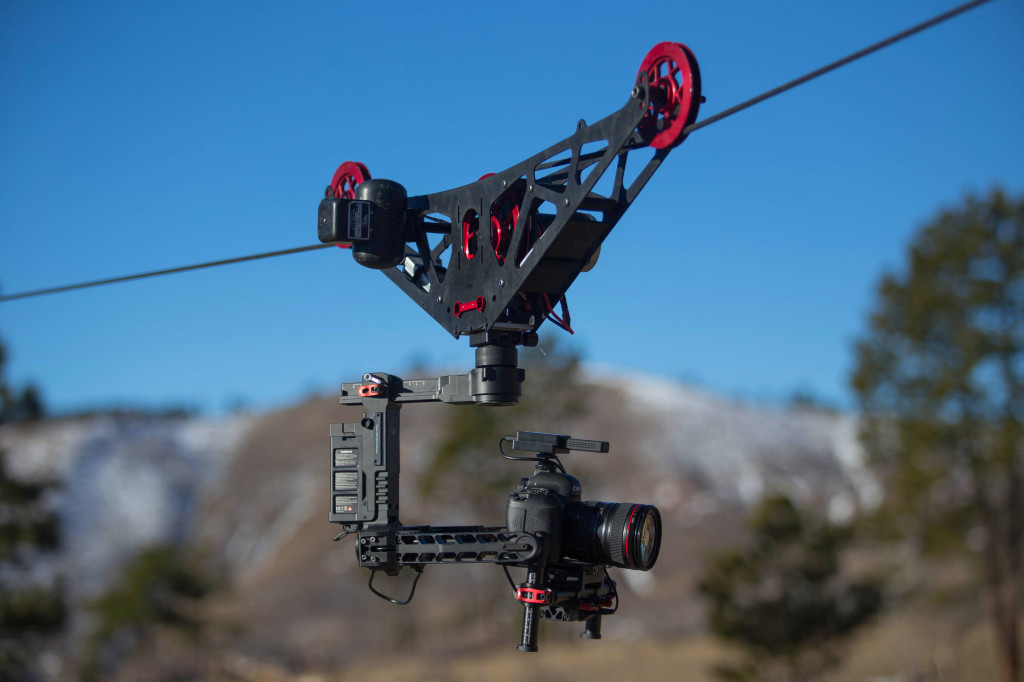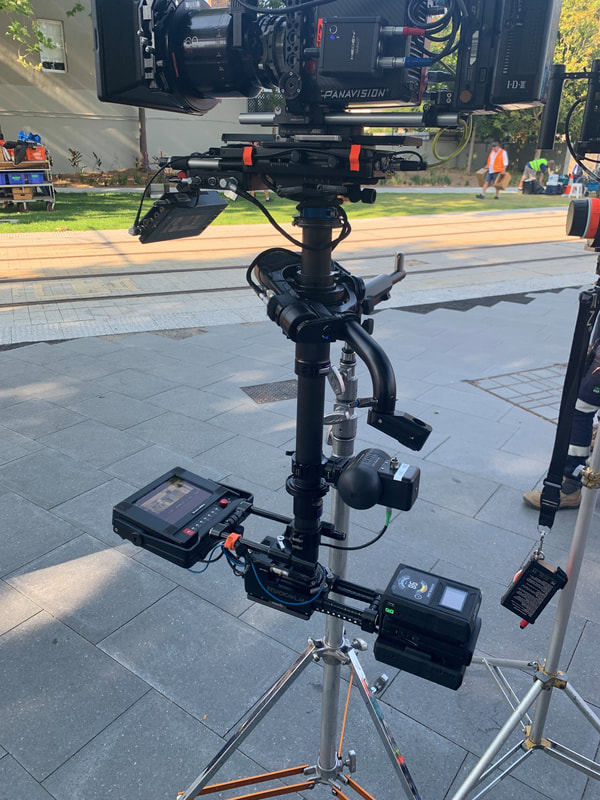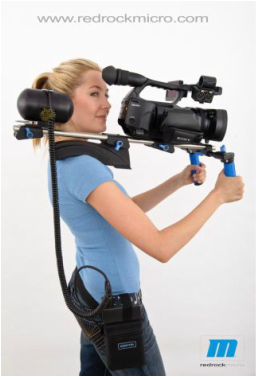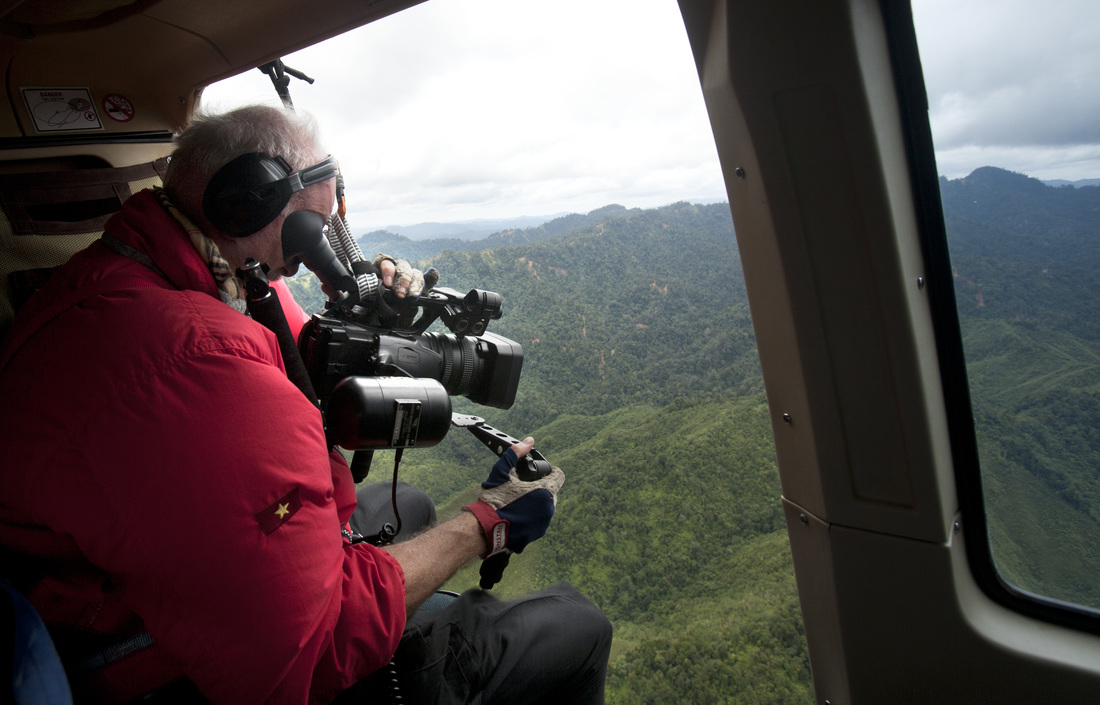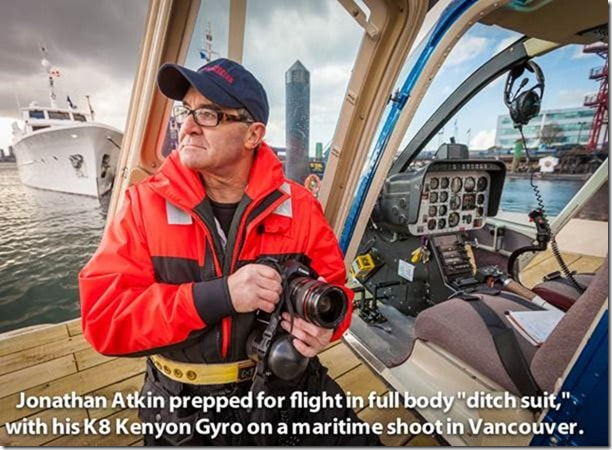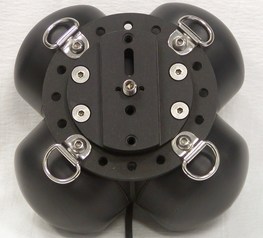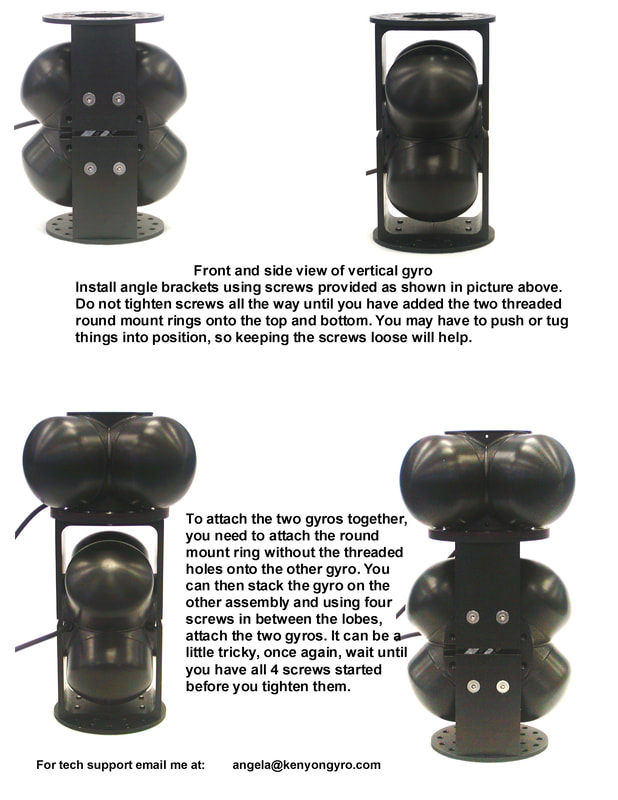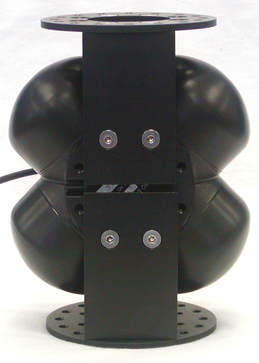How Do You Choose Which Kenyon Gyro Will Work For You?
1) When choosing which gyro will work for your needs, consider the weight of ALL your equipment, including lenses, quick release systems, anything you are attaching to the gyro must be taken into account. More weight can limit the gyros' effectiveness and you may have to consider stepping up to a larger gyro.
2) You must also consider where, when and how you will be using the gyro. If you are subjecting the gyro to rougher situations, such as heavy seas or air turbulence, a heavier gyro will serve you better than a lighter one. You just can't argue with physics!
3) Another factor is your level of experience. As you learn to let the gyro do what it is designed to do, your results will improve. You must always remember, the gyro wants to stay on target and stabilize whatever it is attached to, but if you are not allowing it to react freely to outside forces, it cannot do it's job. If you hold onto it too tightly, it is trying to stabilize you, if you attach it to anything, it will try to stabilize whatever it is attached to. If used with a mount, all the above still applies, a light touch just to guide the gyro is important.
1) When choosing which gyro will work for your needs, consider the weight of ALL your equipment, including lenses, quick release systems, anything you are attaching to the gyro must be taken into account. More weight can limit the gyros' effectiveness and you may have to consider stepping up to a larger gyro.
2) You must also consider where, when and how you will be using the gyro. If you are subjecting the gyro to rougher situations, such as heavy seas or air turbulence, a heavier gyro will serve you better than a lighter one. You just can't argue with physics!
3) Another factor is your level of experience. As you learn to let the gyro do what it is designed to do, your results will improve. You must always remember, the gyro wants to stay on target and stabilize whatever it is attached to, but if you are not allowing it to react freely to outside forces, it cannot do it's job. If you hold onto it too tightly, it is trying to stabilize you, if you attach it to anything, it will try to stabilize whatever it is attached to. If used with a mount, all the above still applies, a light touch just to guide the gyro is important.
|
Kenyon gyros have been used for over a half a century to stabilize numerous devices. Not just a camera stabilizer, our gyros have been used in space, underground, underwater and by the military. Numerous famous National Geographic photographers and bird watchers such as Roger Tory Peterson used our gyros to get those thought provoking shots. We also make a compass adjusting gyro for use in calibrating compasses on boats.
Originally known as the "Invisible Tripod", using a 2 axis gyro is easy, just screw it directly into the threaded tripod socket on a camera, plug the battery and gyro into the inverter and once the gyro gets up to full running speed, you are ready to go. For the "X" series gyros, using quick release clamps and camera plates make the process even easier. No software, no calibrating, weather resistant, wind resistant and repairable if needed. If you just want to take still photos, a 2 axis gyro will serve you well. If you plan to do mostly video, a 3 axis gyro will serve you better. By using brute force mass stabilization, our gyros are ideal for use in tight spaces and in the most challenging conditions. Due to the simple physics of two or four spinning masses, a heavier gyro will offer more stabilization and a faster panning rate. |
Small 2-axis
|
|
The KS-2 and KS-4 gyros are the same size, but differ in weight
and the smallest gyros we make at this time. About the size of a soda can, they can stabilize smaller, lighter cameras, cable cams, binoculars and other optical devices.
Also ideal for attaching to binoculars for more than a 2 X recognition range. |
|
KS-10 & KS-12 Gyro Stabilizers
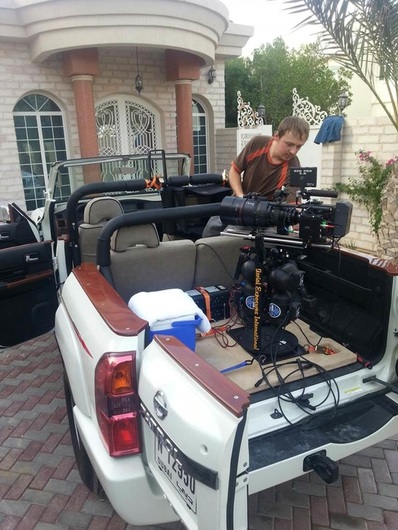 Four Kenyon KS-12 Gyros on a Aerial Exposures Mount
Four Kenyon KS-12 Gyros on a Aerial Exposures Mount
The KS-10 & KS-12 gyros were designed for larger professional broadcast equipment. Not for the fainthearted or for hand holding, these are extremely powerful and are built to handle heavier cameras. Economical compared to the expensive alternatives available when professional results are required. These gyros are built to order, so please contact us for availability and lead time. We do not provide a power source for these gyros. It will be up to you to decide between a 12-14 volt or a 24-28 volt inverter. A heavy duty marine or aircraft battery can be used as well as on board power of an aircraft, boat or vehicle.
The KS10 & KS-12 gyros are built to order.
Please call for pricing, availability and lead time.
The KS10 & KS-12 gyros are built to order.
Please call for pricing, availability and lead time.
3 Axis Gyro Stabilizers -The "X" Series
When renting or purchasing an X series gyro, please consider how you wish to attach the gyro to your camera!
The X series gyros were designed to use a quick release clamp system along with the proper camera plate that will attach to your camera. Because there are so many variations of different cameras and quick release clamp systems (QRC), it is almost impossible for us to provide for every type. A QRC and exact camera plate for your camera is an invaluable tool for all types of tripod mounts, once you have one, you will always use one. You should first find a camera plate that is specifically made for your camera (but a universal plate will work, too), you want one that will prevent the plate from twisting or moving on your camera, then of course you will need a compatible clamp. Kirk Enterprises, Sunwayfoto, Really Right Stuff and Manfrotto are just to name a few and are the brands we are most familiar with. Many can be bought right from Amazon.com, your favorite camera supply store or online from each manufacturer. For around $50 to $200, you can usually get both the plate and the clamp. With a little bit of research, it will be worth the investment. If you have any questions or need your clamp and plate system modified to fit the gyro, we are more than willing to help as well as do the modification here at the shop.
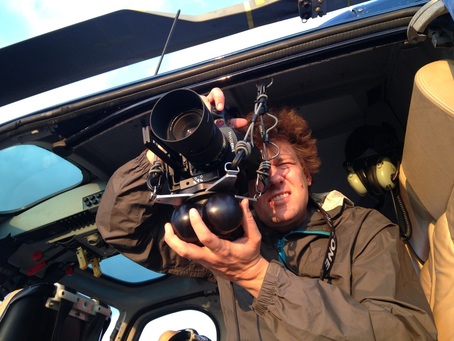 KS-4x4 Kenyon Gyro used by Taylor Crothers
KS-4x4 Kenyon Gyro used by Taylor Crothers
KS-2x2 and KS-4x4 Gyro
The Kenyon 2x2 and 4x4 are the same size but differ in weight
The Kenyon 2x2 and 4x4 are the same size but differ in weight
- KS-2x2 Weighs 3.6 lbs. (1.633 kg.)
- Starting amp draw (@ 12 volts) 2.5 amps dropping to 1.5 at full running speed of 20,000 rpm
- Runs off our 12 volt battery pack for 2.5 to 3 hours
- For equipment weighing up to 3.5 lbs.
- Panning rate 10 degrees per second
- KS-4x4 Weighs 4.8 lbs. (2.177 kg) Outside dimensions=6.03"(15.316 cm)6.03"(15.316cm)
- 3.0" (7.62 cm) high without accessories
- Draws 2.5 amps (@12 volts) at start up dropping to 1.5 amps after 8-10 minutes - 115 VAC 400 Hz
- Runs off our 12 volt battery pack for 2.5 to 3 hours
- Stabilizes equipment in the 3.5-6 lb (1.59-2.72kg) range
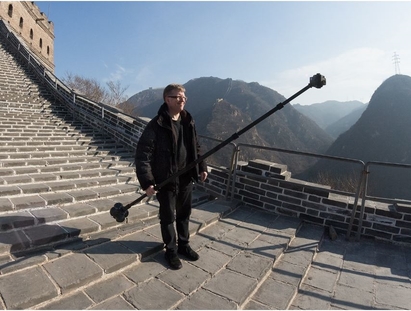 KS-6x6 Kenyon Gyro used on Freedom 360 Rig
KS-6x6 Kenyon Gyro used on Freedom 360 Rig
KS-6x6 and KS-8x8 Gyro
The Kenyon KS-6x6 and KS-8x8 are the same size but differ in weight.
- KS-6x6 - Weighs 6.8 lbs. (3.084 kg.)
• 3.7" (9.398 ) high without accessories
• Draws 4.6 amps (@12 volts) at start up dropping to 2.2
amps after 8-10 minutes - 115 VAC 400 Hz
•Can run up to 2 hours on fully charged Ken Lab battery pack Stabilizes equipment in the 5-8 lb. (2.27 - 3.63 kg) range
- The KS6x6 gyro has become our most popular gyro for aerial photography, Steadicams and 360 immersive media use with multiple camera arrays.
- A useful optional accessory we offer is called the D-Ring mount plate, a thin round plate that attaches to the gyro and has 16 threaded holes to attach D-rings so the gyro can be suspended by bungee cords.
KS-8x8 Gyro
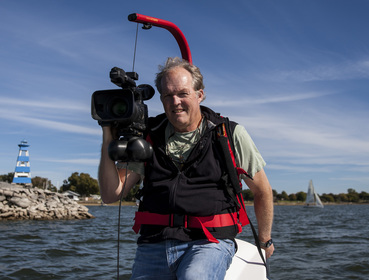 Onne Van Der Wal with KS8x8 Gyro and Easy Rig Vest
Onne Van Der Wal with KS8x8 Gyro and Easy Rig Vest
Weighs 10.4 lbs. (4.717 kg.)
•Outside dimensions-7.64" (19.406 cm)x 7.64"(19.406 cm)
3.7" (9.398 cm) high without accessories
Draws 4.6 amps (@12 volts) at start up dropping to 2.5amps in 10 minutes - 115 VAC 400 Hz
•Can run up to 2 hours on fully charged Ken Lab battery
pack
• Stabilizes equipment in the 9-20 lb. (4.1-9.2 kg)
range
The weight of this gyro is better suited for use with a
mount or a bungee cord setup, but hand holding is possible.
A useful optional accessory we offer is called
the D-Ring mount plate, a thin round plate that
attaches to the gyro and has 16 threaded holes
to attach D-rings so the gyro can be suspended
by bungee cords. Another option is using our custom
as seen in the pictures below. By using the same mount
mount rings, you can suspend one gyro vertically and if desired, a second gyro can be attached horizontally.
The Kenyon dovetail mount plate can then be attached
on either the top, the bottom or both
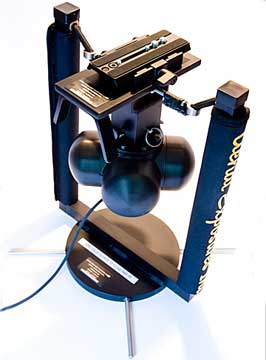 Kenyon KS-8x8 Gyro on Aerial Exposures ATM Camera Mount
Kenyon KS-8x8 Gyro on Aerial Exposures ATM Camera Mount
"The X8 Three Axis Telescopic Mount"
Weighs only 20 pounds with one KS-8x8 gyro
Easily transportable
Telescopic mount adjusts for different camera weights
ATM Dual X8 also available to mount two KS-8x8 gyros to increase stability when using heavier cameras
Does NOT attach to the aircraft
Does NOT need expensive FAA approvals
Until now professional camera stabilization from a moving platform has only been achieved through the use of very expensive stabilized mounts that are usually rented. Developed for our own professional aerial photography business the Aerial Exposures Gyro Stabilized Mount & Platform is the most affordable stabilized video or film platform that produces professional quality stabilized imagery.
Quality video from an aircraft, helicopter, boat, car, off road vehicle or any unstable moving platform is almost impossible without some form of stabilization. The Aerial Exposures Gyro Stabilized Platform is a portable system that is quick to set up and will work for many different video applications.
Can be purchased through Kenyon Laboratories or directly from Arnie at Aerial Exposures
Weighs only 20 pounds with one KS-8x8 gyro
Easily transportable
Telescopic mount adjusts for different camera weights
ATM Dual X8 also available to mount two KS-8x8 gyros to increase stability when using heavier cameras
Does NOT attach to the aircraft
Does NOT need expensive FAA approvals
Until now professional camera stabilization from a moving platform has only been achieved through the use of very expensive stabilized mounts that are usually rented. Developed for our own professional aerial photography business the Aerial Exposures Gyro Stabilized Mount & Platform is the most affordable stabilized video or film platform that produces professional quality stabilized imagery.
Quality video from an aircraft, helicopter, boat, car, off road vehicle or any unstable moving platform is almost impossible without some form of stabilization. The Aerial Exposures Gyro Stabilized Platform is a portable system that is quick to set up and will work for many different video applications.
Can be purchased through Kenyon Laboratories or directly from Arnie at Aerial Exposures
KS-10 x 10 & KS-12 x 12 Gyros
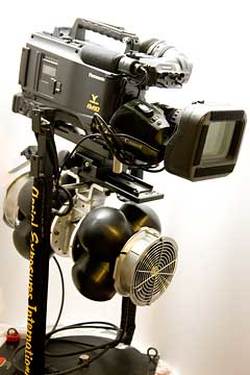
The Kenyon KS-10 x 10 and KS-12 x 12 gyros are both used for the larger, heavier broadcast cameras and can only be used with some type of heavy duty mount system.
While Kenyon does not provide any mounts,
Arnie at Aerialexposures.com manufactures a mount system specifically for Kenyon gyros as well as Peter at Gyromounts.com
When professional results are needed at an economical price,
a gyro stabilized mount system will get the job done!
Both the KS-10 x 10 and KS-12 x 12 gyros are exactly the same size,
but differ in weight.
The outside dimension of the gyro including the DC cooling fan are:
---10.68" long x 10.68" wide and 7.5" high---
---The KS-10 x 10 weighs about 22 lbs---
---The KS-12 x 12 weighs about 35 lbs.---
The gyros can stabilize equipment that weigh almost double the gyros
weight.
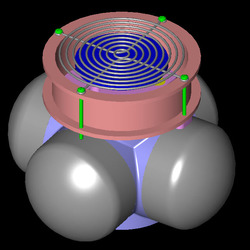
Specifications for the special inverter made by SEC America and sold by us are:
---The STV 404 inverter is for power input of 22-32 VDC---
The gyro will draw around 14 to 15 amps at startup
and drop to around 6 to 7 amps at full running speed.
The outside dimensions of the inverter are:
13" long x 8 1/4" wide x 3.5" high and weighs 7 lbs.
Output power is 600 watts - 215 VAC -400 Hz
The KS-10x10 & KS12x12 gyros are built to order.
Please call for pricing, availability and lead time.
IMPORTANT: We do not provide a power source or DC power cabling for these gyros.
A heavy duty 28 volt marine or aircraft battery can be used as well as on board power of an aircraft, boat or vehicle. It is very important to provide enough power to get the gyros started as well as maintain enough power for your shoot times.
